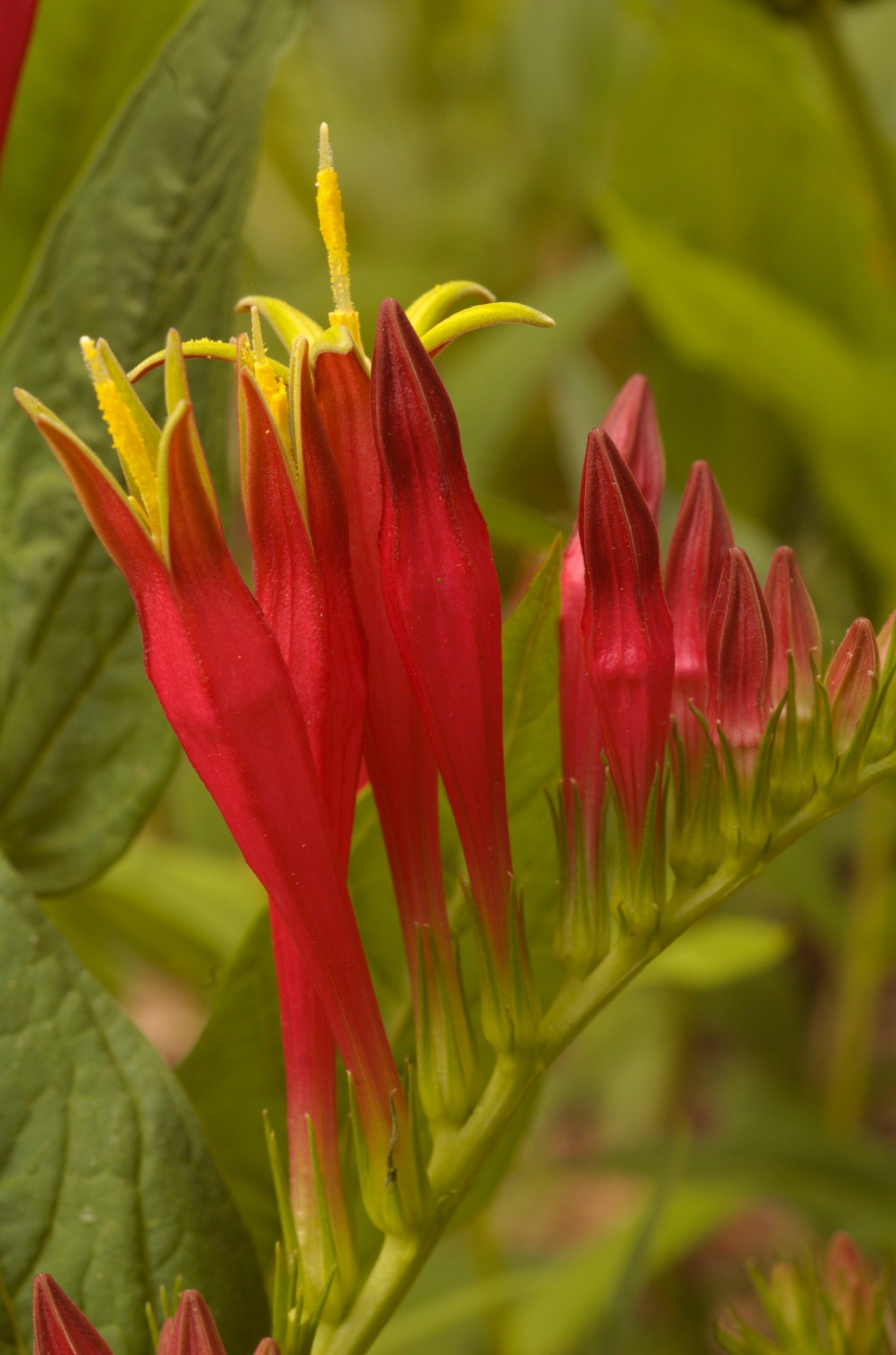The Healing Power of Plants
A frequent argument for the conservation of biodiversity is the need to protect a cure for cancer, or other medical miracle, hiding away in some undiscovered plant in the rainforest. While it’s true that plants unknown to science – and their potentially unique chemical compounds – are at risk, it’s also true that people across the world already reap the medical benefits of plants. According to Dr. Jim Affolter, Director of Science and Conservation at the State Botanical Garden of Georgia, “It is no exaggeration to say that the majority of people in the world still rely on traditional medicine, including herbal medicine.”
Medicinal plants are used by a variety of people and in a variety of forms. Many rely on plants because they lack access to pharmaceutical medicines, due to unavailability or expense. Others find it easier to work with the plants in their own backyard or region. Still others actively turn from western medicines, seeking gentler and time-tested plant-based remedies and holistic medical approaches. Options include growing or foraging for plants, buying from a local purveyor, or buying over-the-counter products in a local market. In the U.S., herbal medicine has waxed and waned through the centuries. A recent resurgence is credited to reduced regulation by the Food and Drug Administration following the Dietary Supplement Health and Education Act of 1994.
Despite ups and downs over time throughout the U.S., Native American and Appalachian communities of the Southeast maintain strong herbal medicine traditions. American ginseng, goldenseal, black cohosh, saw palmetto, yellowroot, and mayapple are examples of species valued by local populations. Recognition of the medicinal value of these plants can lead to a more general appreciation of plants and access to forests. On the downside, foraging and commercial collecting place additional pressures on wild populations of these plants.
-
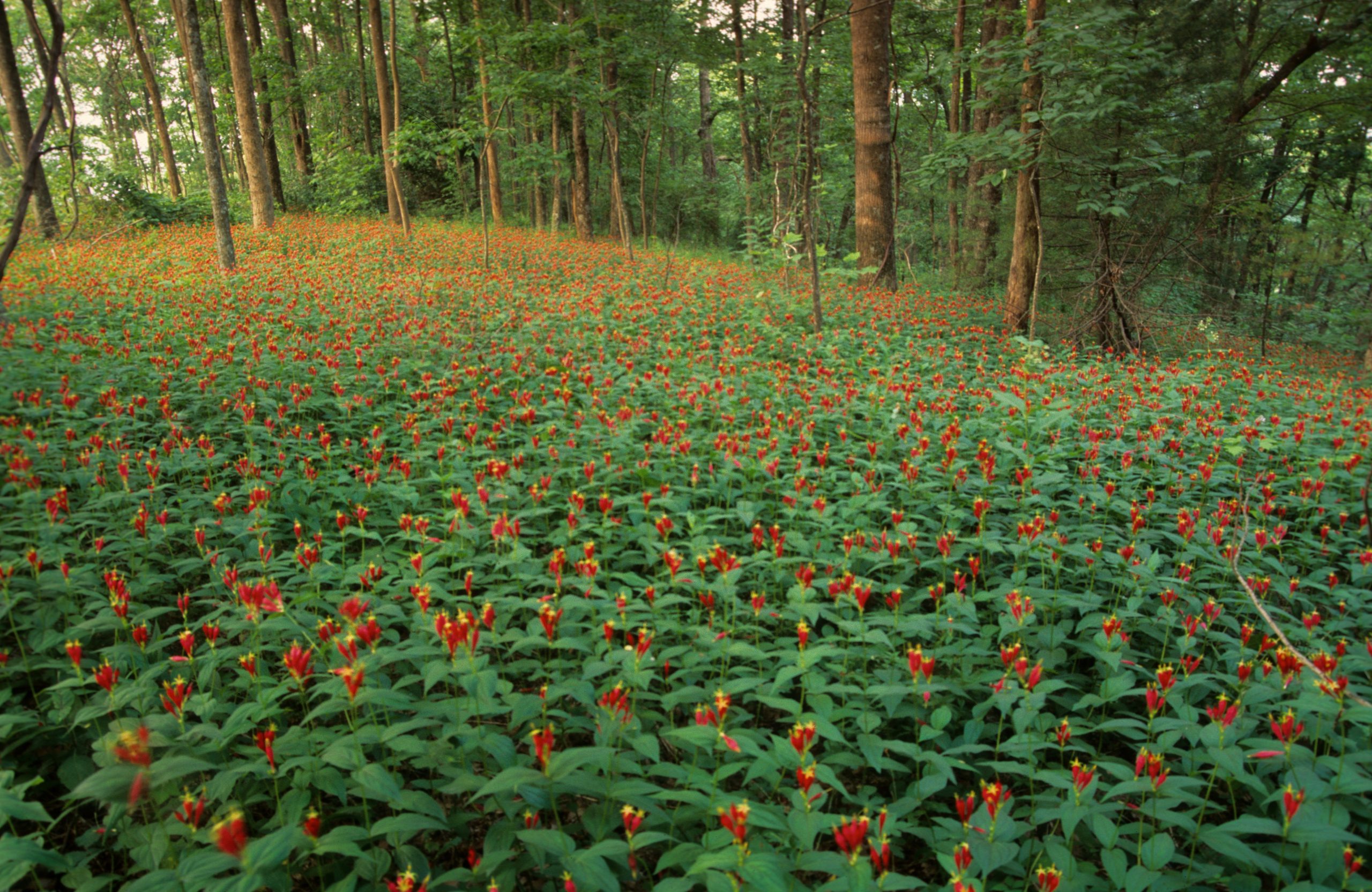
A forest popoulation of Indian pink (Spigelia marilandica). Anecdotally, when Dr. Affolter was conducting a general study on Indian pink, it was difficult to find large populations, which could a legacy of the heavy harvest of colonial times. Photo by Hugh and Carol Nourse -
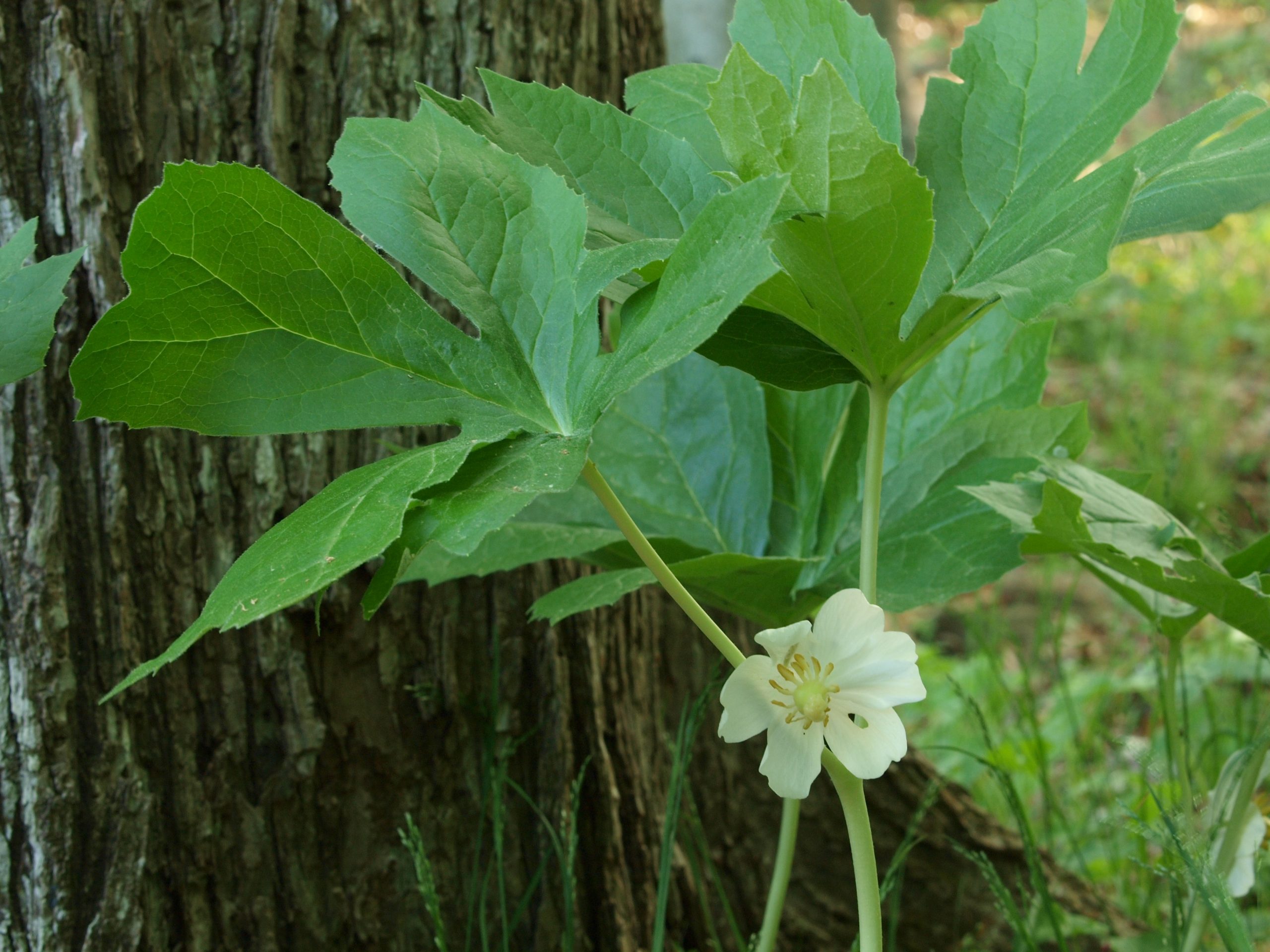
The dried roots of Mayapple (Podophyllum peltatum) were used by some Native American tribes as a purgative, and the medicine was quickly adopted by early colonial doctors. It is caustic on skin, such that it has been used both historically and contemporarily as a topical treatment for various types of skin lesions. More recently, it has been found to have anti-cancer properties and was found both to be anti-tumoural and to cause toxic side effects in the patient. State Botanical Garden of GA Photo by Hugh and Carol Nourse -
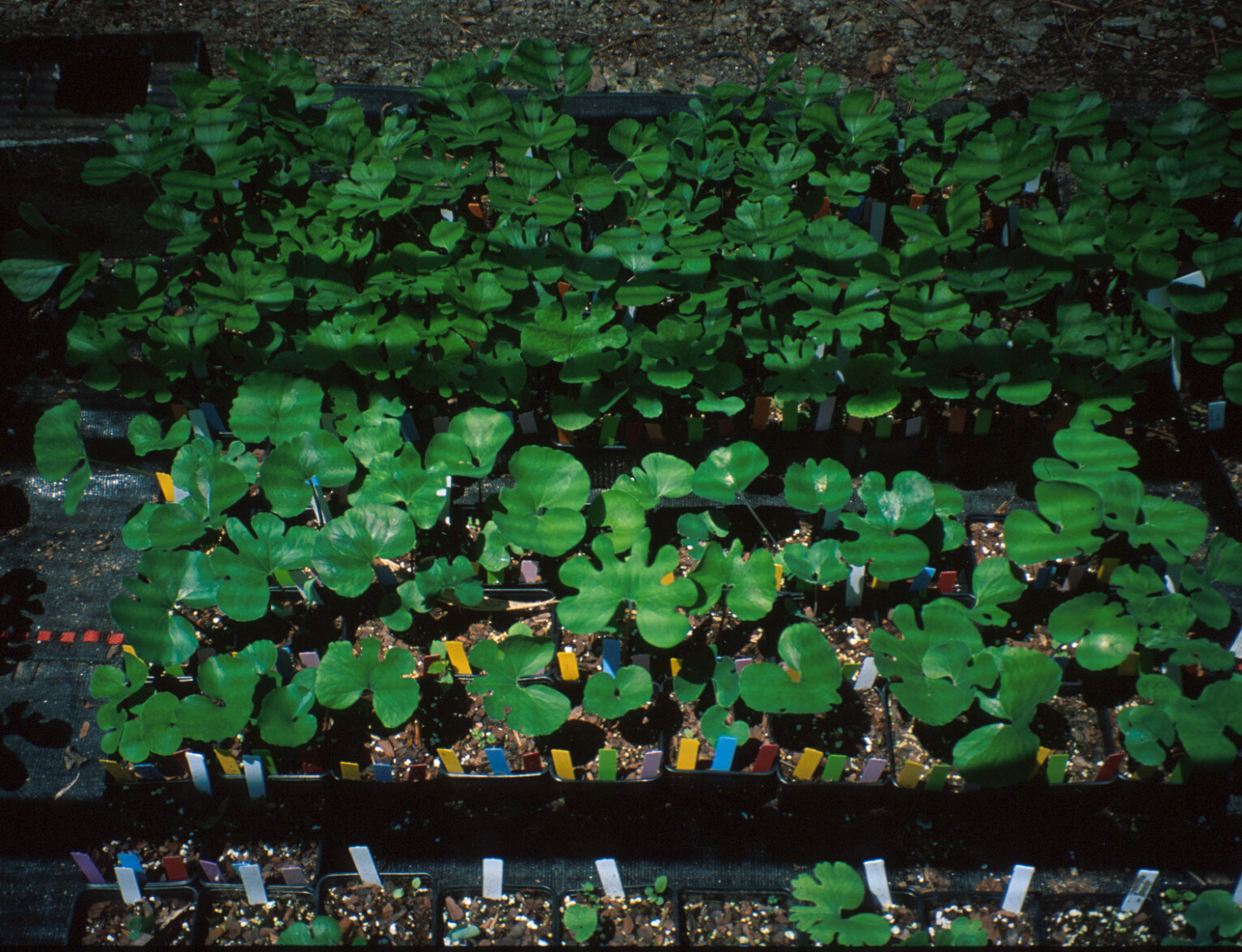
Research on propagation and domestication potential is necessary before wild medicinal plants can be grown commercially. One of Dr. Affolter's graduate students explored cultivation methods for bloodroot (Sanguinaria canadensis) with the University of Georgia Department of Horticulture. Pictured is a bloodroot propagation experiment. Photo by Jim Affolter
Domestication and commercial production of plants for medicinal use may seem like a good solution, yet it can present complications. For some species, horticultural practice has not been developed. In these cases, production on an economical scale requires research, and even then may not be feasible. One example is bloodroot (Sanguinaria canadensis), a lovely herbaceous spring ephemeral found in rich deciduous woods. Its rhizomes are rich in a bright red alkaloid known as sanguinarine, which has antibiotic, anti-inflammatory, and anti-tumor properties. Harvested on a small-scale, the plant is used for a variety of medical purposes by locals. Some years ago, livestock producers were also interested in using sanguinarine as a feed additive, which threatened to skyrocket demand and threaten populations. Dr. Affolter initiated a research project in which two graduate students examined the growth of bloodroot and factors influencing concentrations of sanguinarine. The plant didn’t prove to be very economical to grow at a commercial level. In the end, a related species, plume poppy (Macleaya cordata), that produces lower concentrations of sanguinarine, but is coarser and more aggressive – and thus easier to cultivate, was selected to supply the feed industry.
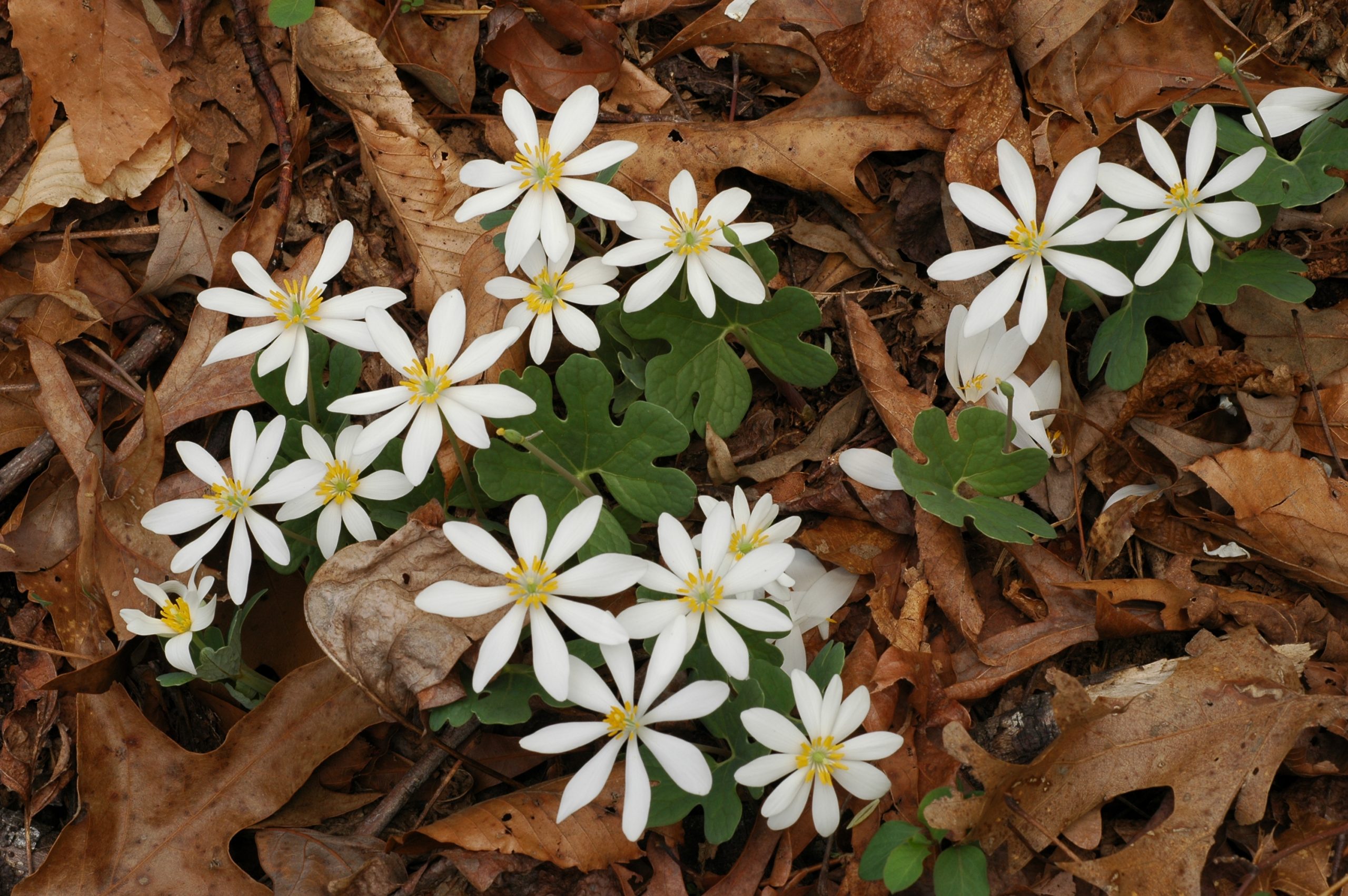
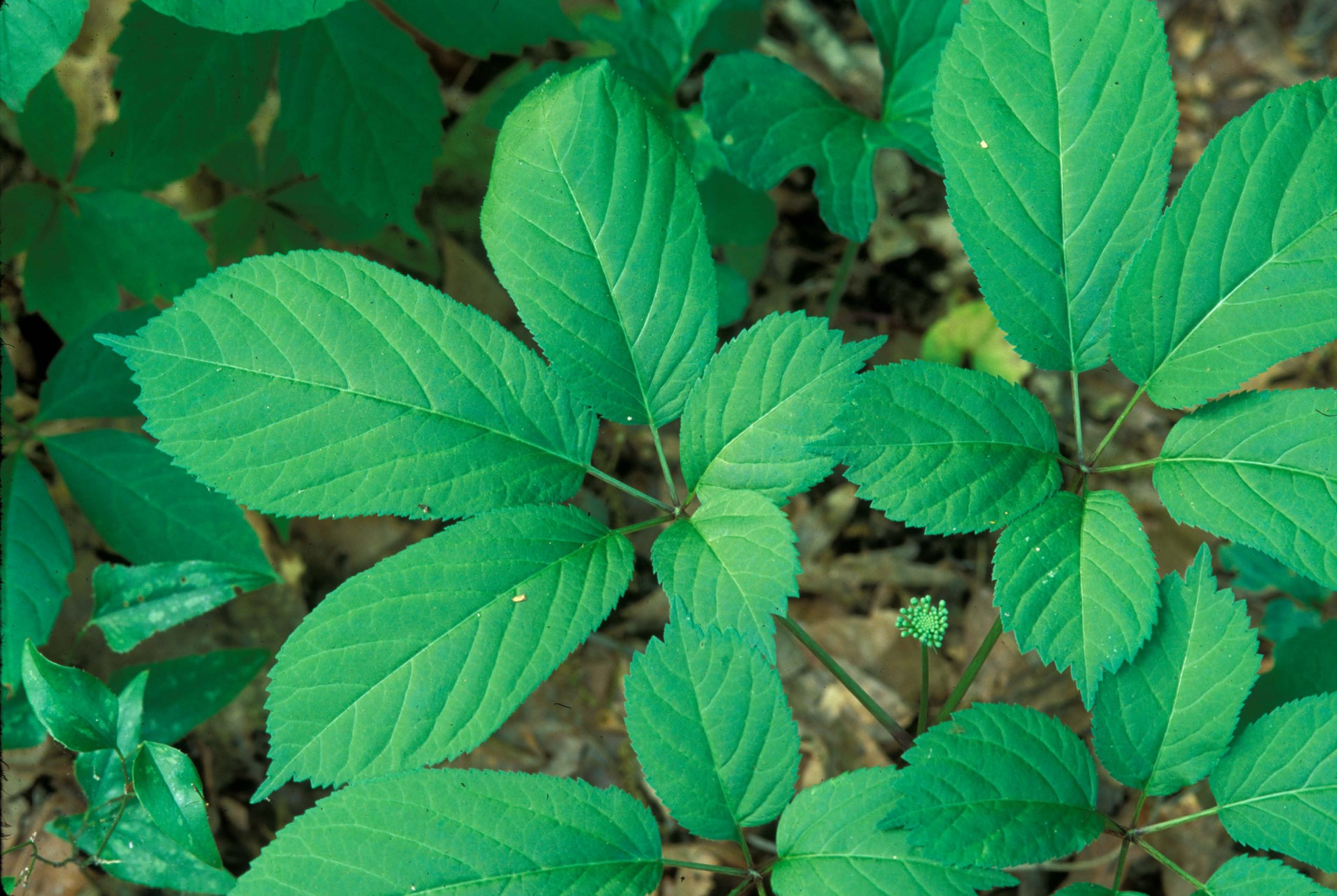
Even when commercial operations are viable options, they aren’t always welcome. Dr. Affolter described a recent rise in ‘outsiders’ from the Northeast working to turn former tobacco farms and other mountain properties in western North Carolina towards production of locally harvested medicinal plants. The local community, who considers the wild harvest and use of these plants as part of their local economy and cultural identity, saw these operations as threats. Despite such setbacks, progress is being made on the ‘conservation through cultivation’ front. Dr. Jeanine Davis, in the Department of Horticultural Science at North Carolina State University, and her co-author, W. Scott Persons, present a wealth of knowledge and guidance for local growers in their book, Growing and Marketing Ginseng, Goldenseal, and Other Woodland Medicinals.
Meanwhile, strategies for ethical foraging of some of the southeast’s medicinal plants are in development by the State Botanical Garden of Georgia and partners on the University of Georgia campus. This includes defining what ethical foraging looks like for these species, and bridging the gap between foragers and regulators – agency and public land managers who permit, monitor, and enforce forest product harvest. Data collected through surveys and workshops will help to clarify agency and foraging community concerns and suspicions, guiding the project as it develops. A key goal is to avoid a ‘tragedy of the commons’ scenario in which lack of private ownership and responsibility leads to overharvest, while still allowing economic and cultural practices in public spaces.
Although harvesting pressures may threaten local populations, most native species of medicinal plants are not endangered on a global level and therefore not the direct focus of conservation projects at the State Botanical Garden. Yet sharing information about medicinal plants often provides a hook that allows the Garden to educate the public about plants. Their Native Plant Certificate Program offers electives focused on medicinal plants and local species. Dr. Affolter teaches a popular undergraduate class titled Herbs, Spices and Medicinal Plants. He observes that many of his students, interested in the uses of local plants or disillusioned with modern health care, find their eyes “opened to a whole new world of health care and the healing power of plants.” Sparking an interest in medicinal plants invites exploration – often in a hands-on way – of the wonders of plants, leading to an increased appreciation of and interest in conservation.
